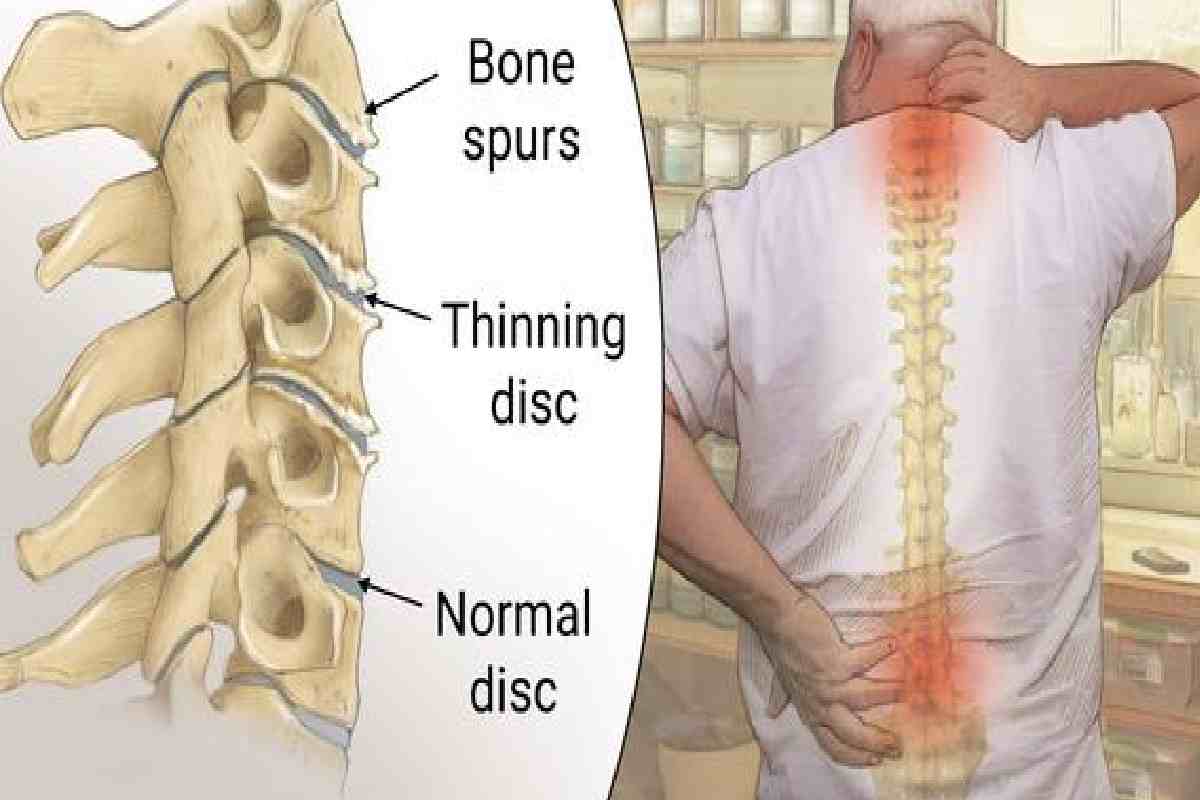Table of Contents
What Is Spondylosis
First of all, it should be noted that spondylosis is not a disease in itself, but rather a generic expression. Principally, the term spondylosis is use to describe any degeneration in the spinal column. This degeneration is closely related to the wear suffered by the spine over the years, which is why it affects more than 85% of people who are over 60 years old.
Depending on the part of the back that is affecter, we can describe three different types of spondylosis.
Types Of Spondylosis
Spondylosis Lumbar
Lumbar spondylosis manifests between the L1 – L5 vertebrae, causing pain in the lower back and numbness or numbness in areas of the body related to the nerves that pass through the lower back such as legs and feet.
Spondylosis Cervical
Cervical spondylosis occurs when the intervertebral discs in the neck region suffer wear. This wear and tear can cause pain, stiffness, and even numbness in the upper extremities of the body. It is the most common type of spondylosis in the elderly.
Thoracic Spondylosis
Thoracic spondylosis is the least common type of all: it affects the vertebrae located in the central area of the spine. Being the part of the spine that flexes the least, it has much less wear concerning the cervical and lumbar regions, which support and give flexibility and movement to the spine.
Causes Of Spondylosis
As we have previously mentioned, the causes of spondylosis come from the gradual ageing and wear suffered by the spine’s bones over the years. The main effects of degeneration that we can point out are:
- Wearing of the intervertebral discs: The vertebral discs are like small pads found between the bones. As the years go by, these discs begin to suffer wear and tear that can cause the vertebrae to touch each other, causing pain, swelling and other problems.
- Bone overgrowth: Bone spurs are common in the elderly and can pressure the nerves that run through the spine.
- Herniated disc: with the natural wear of the intervertebral discs, it is normal for fractures or tears to occur that affect a nearby nerve. They occur more frequently in the lower back, although they manifest in the cervical region.
- Stiffness of the ligaments: These tend to degenerate and harden over the years, causing loss of flexibility.
- Deformation in the facet joints: a loss of the articular cartilage occurs due to the friction of the vertebrae, causing abnormal bone growths (osteophytes).
Spondylosis Risk Factors
In addition to the common causes that affect people with age, certain risk factors contribute to the development of the conditions previously described:
- Injuries: Any previous injury a person has sustained to the spine.
- Hereditary factors: genetics is a factor that can influence the development of malformations or diseases in the spine.
- Lifestyle: Diet and exercise are essential to maintain a healthy skeletal system. Therefore, smoking, lack of vitamins and minerals, and a sedentary lifestyle can contribute to problems and diseases in the spine.
Symptoms Of Spondylosis
The symptoms that characterize this condition are closely related to the pathology causing the problem in the spine.
In cervical-type spondylosis, we notice greater stiffness and pain in the neck and head. When we talk about lumbar spondylosis, on the other hand, we suffer from a stabbing pain in the lower back .
It is essential to show a doctor if you observe symptoms such as numbness in the extremities, difficulty moving, dizziness, and loss of bladder control.
Treatment To Cure Lumbar And Cervical Spondylosis
The purpose of the treatment will be to improve the patient’s quality of life. For this reason, a traumatology’s specializing in the spine must evaluate the risks and severity of the symptoms together with the patient to determine the best path to follow.
In general, if it is a mild case, conservative treatment will be chosen for both lumbar and cervical pain. Use anti-inflammatory drugs, muscle relaxants and corticosteroid injections to relieve lower back and cervical pain. Likewise, using a lumbar belt can be recommend to alleviate the pain that our patient presents.
If we are talking about a more severe case. It will probably be necessary to perform a spinal endoscopy operation to solve the problem.
Luckily, today there are state-of-the-art techniques practiced by the most experience and prestigious grammatologists in the sector. Allowing minimally invasive spine surgeries through lumbar or cervical hernia microsurgery.

